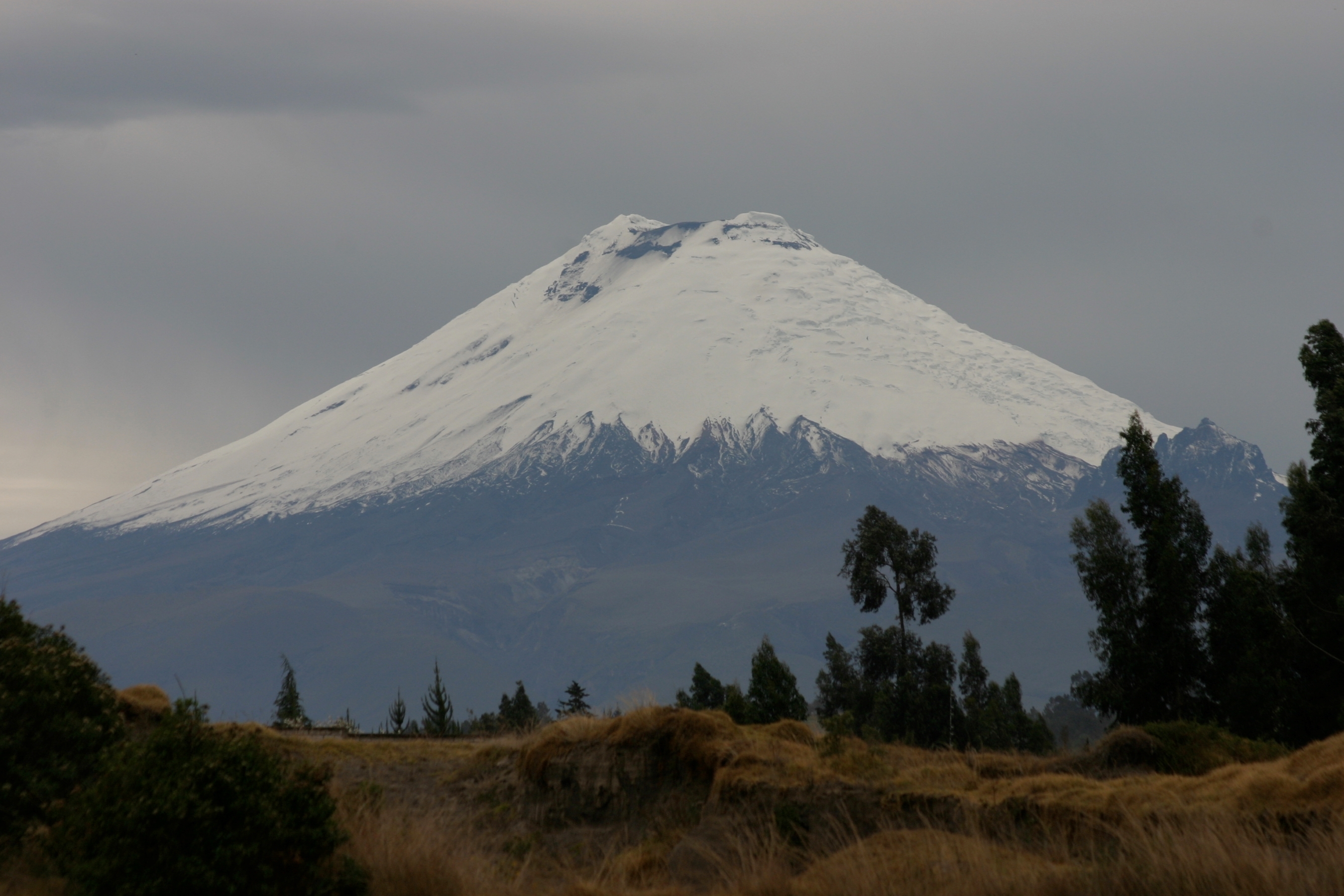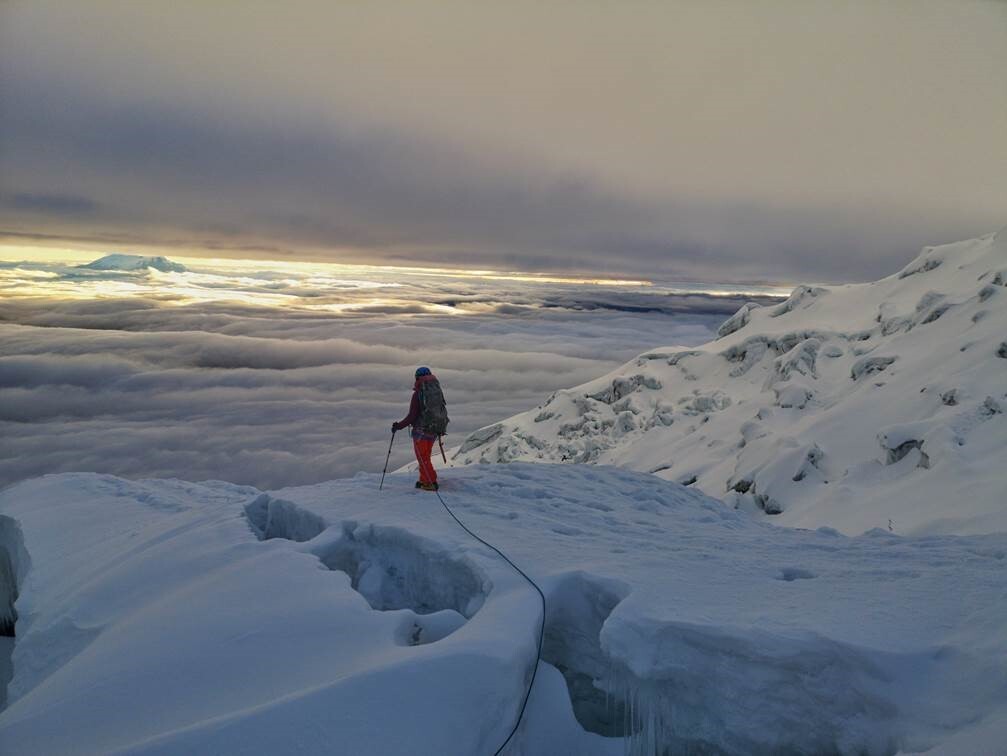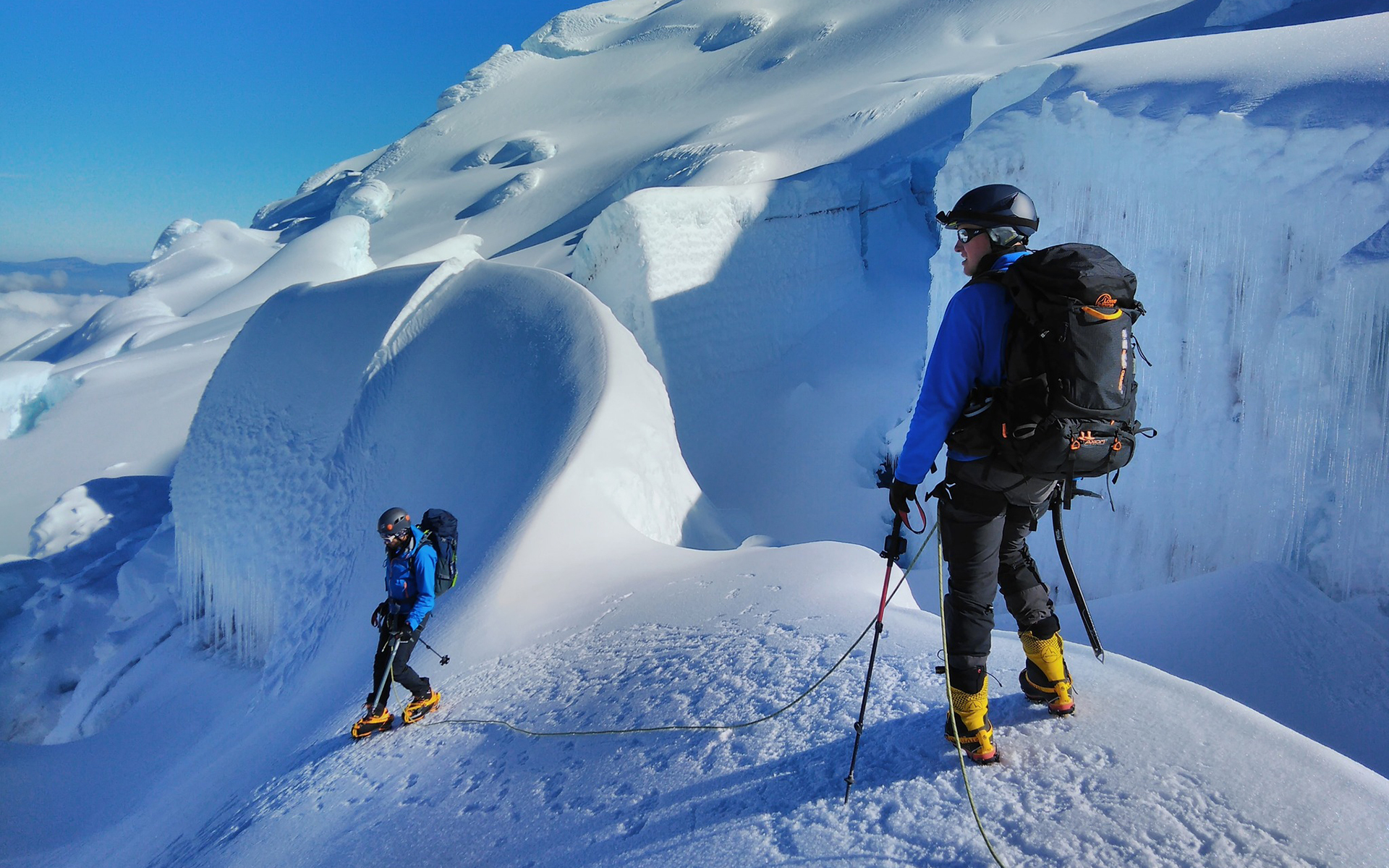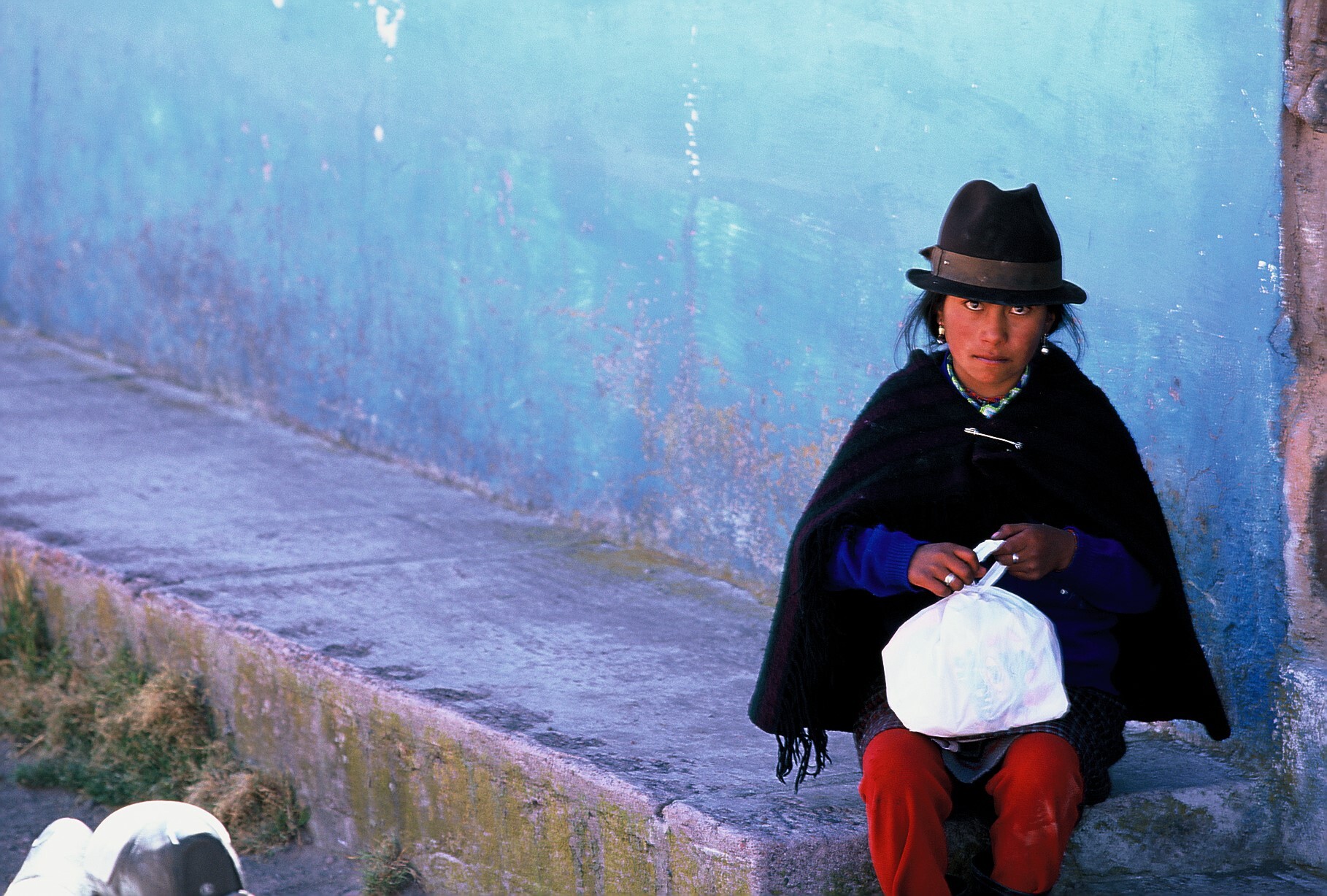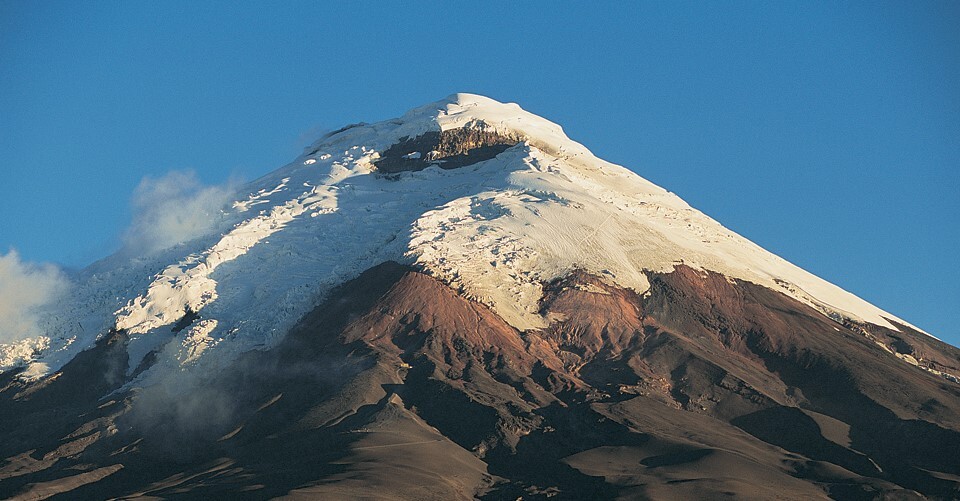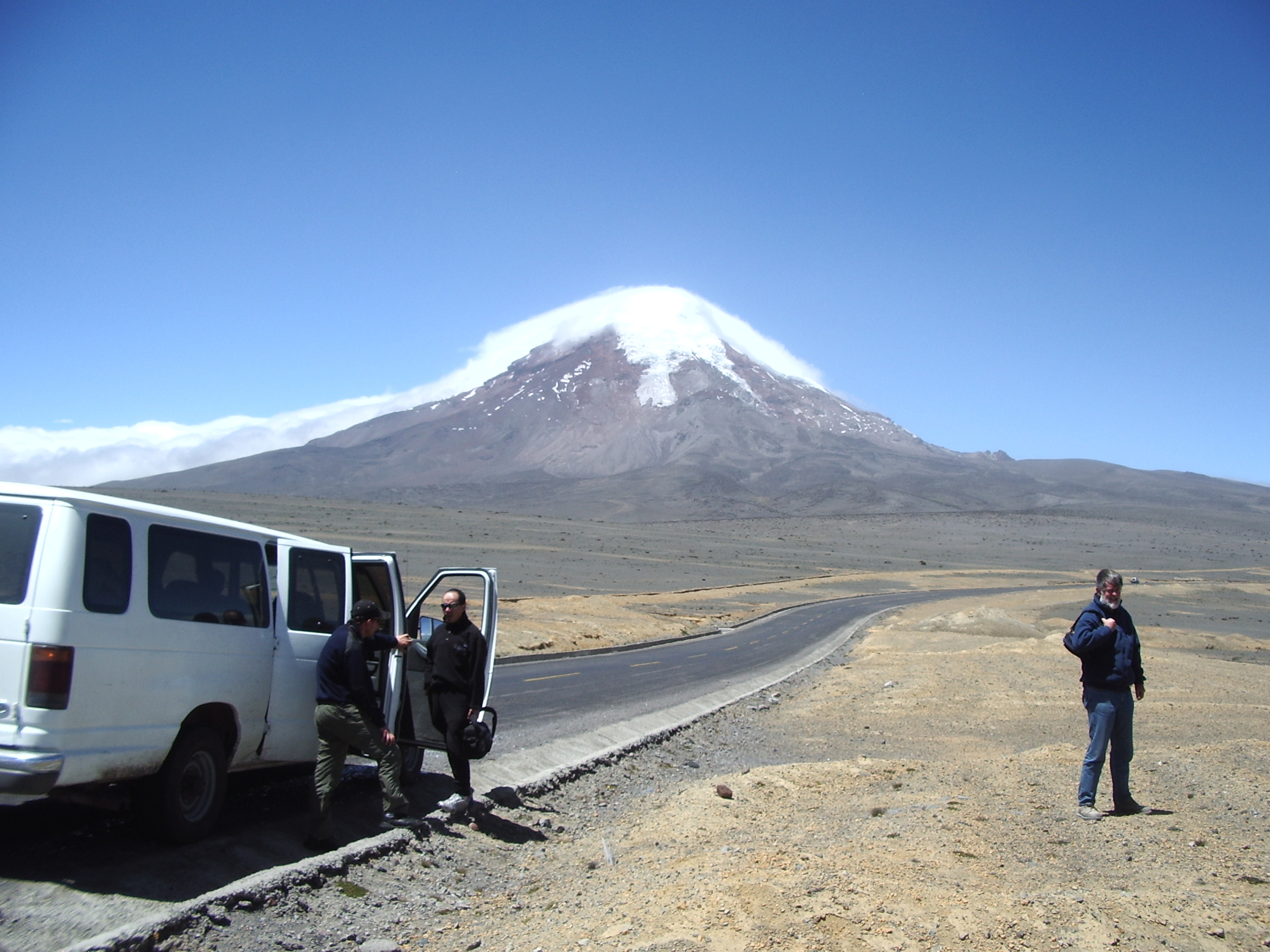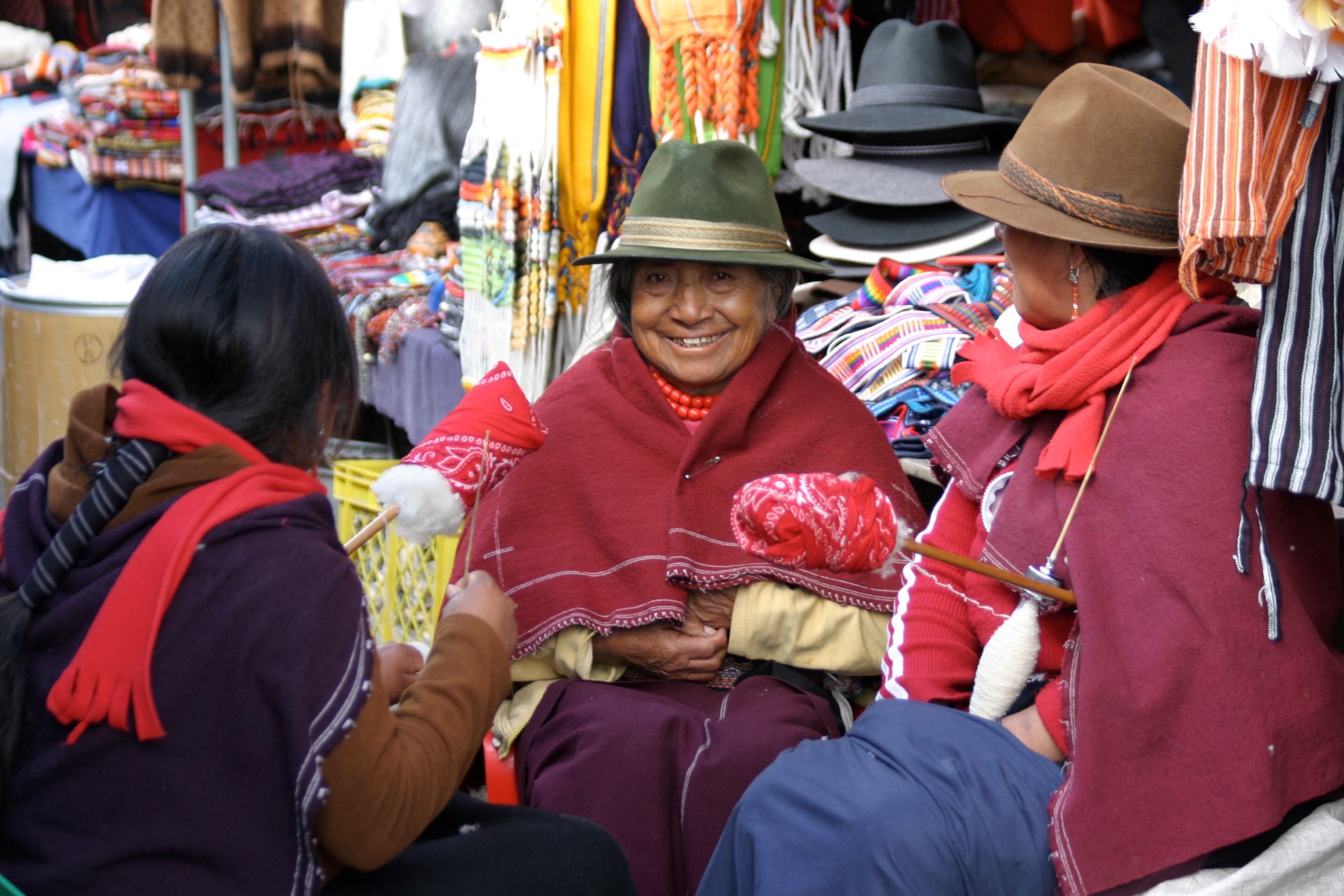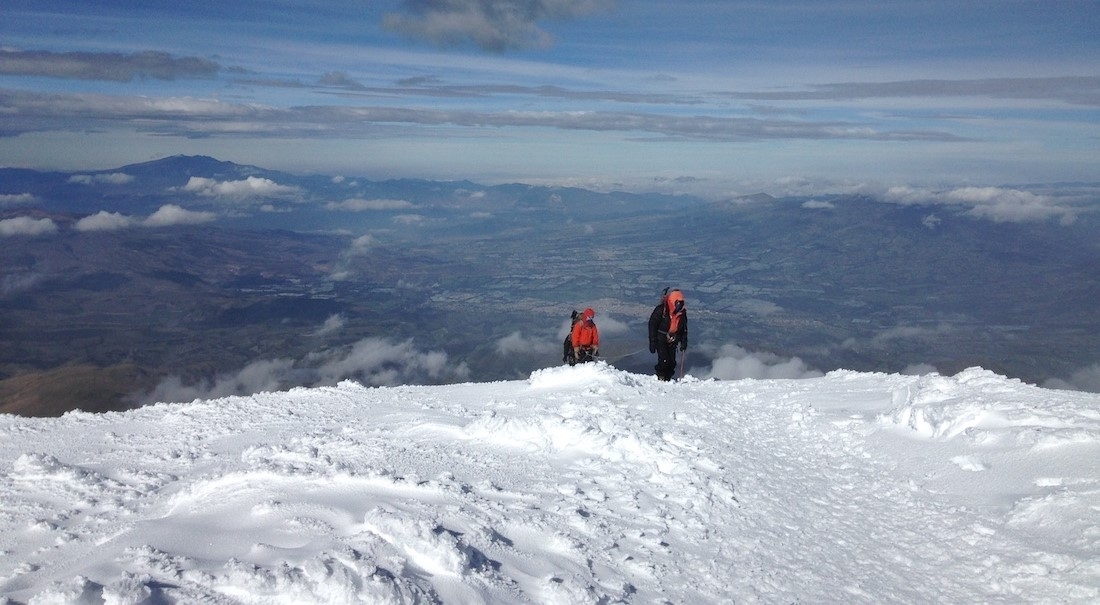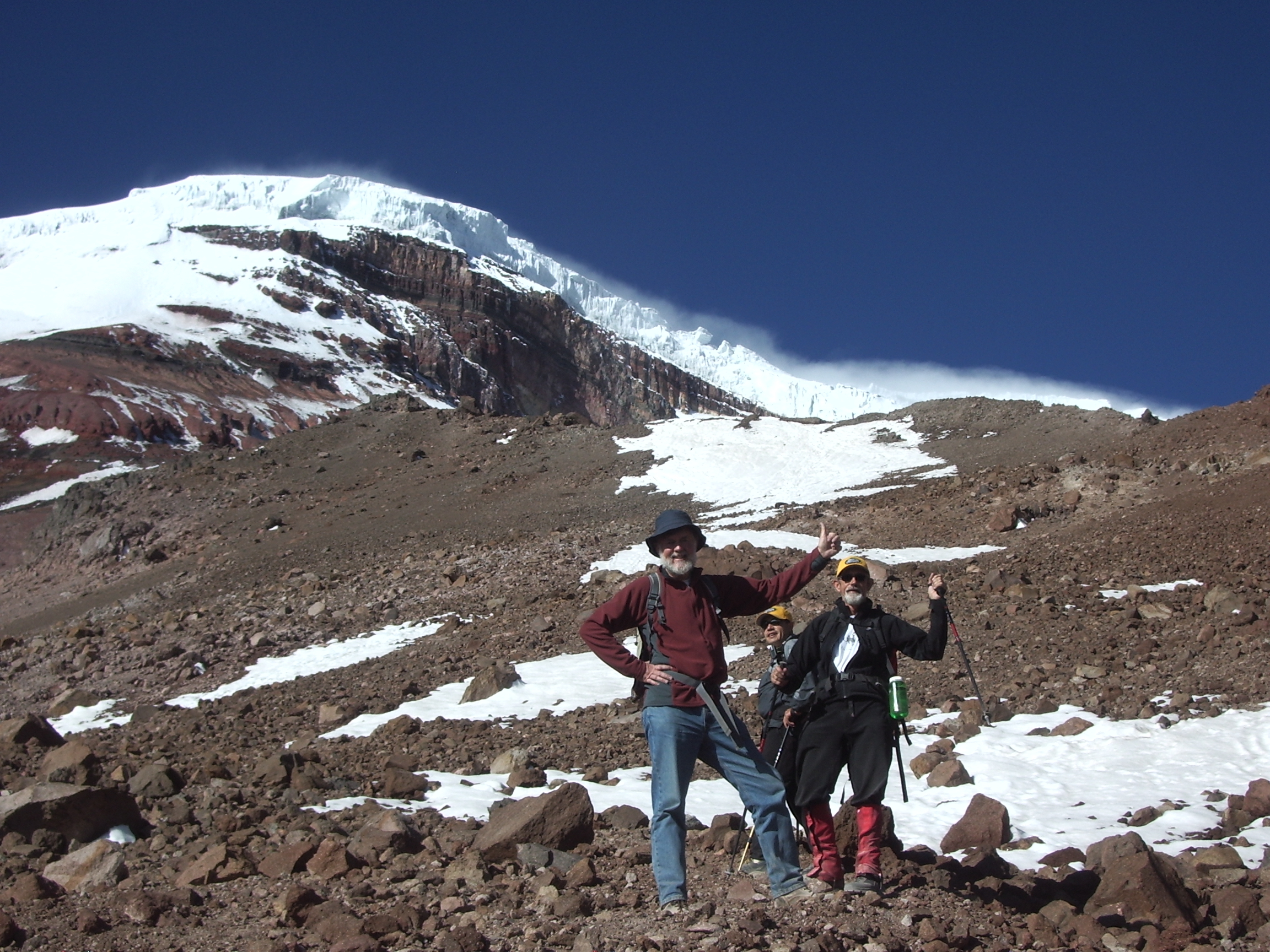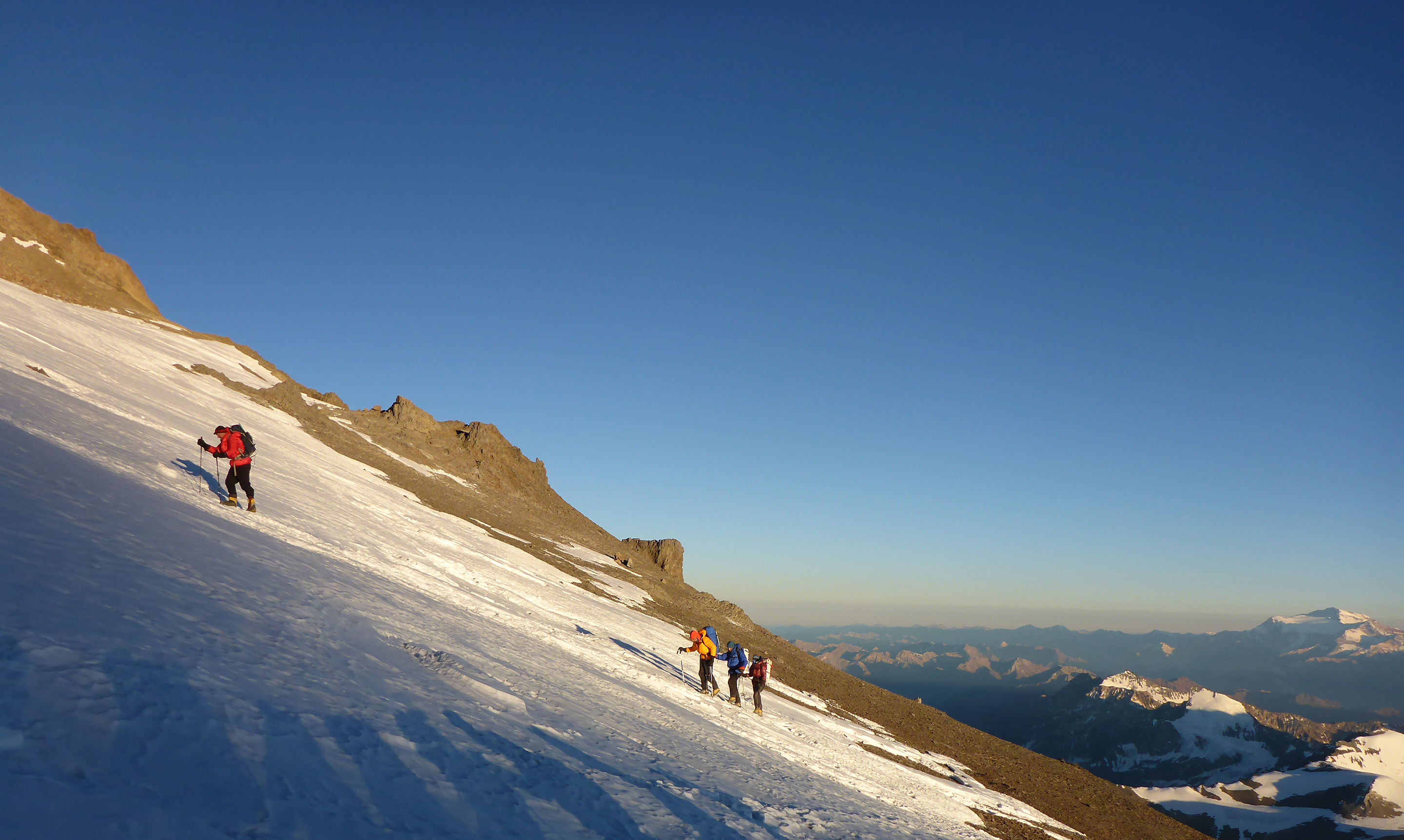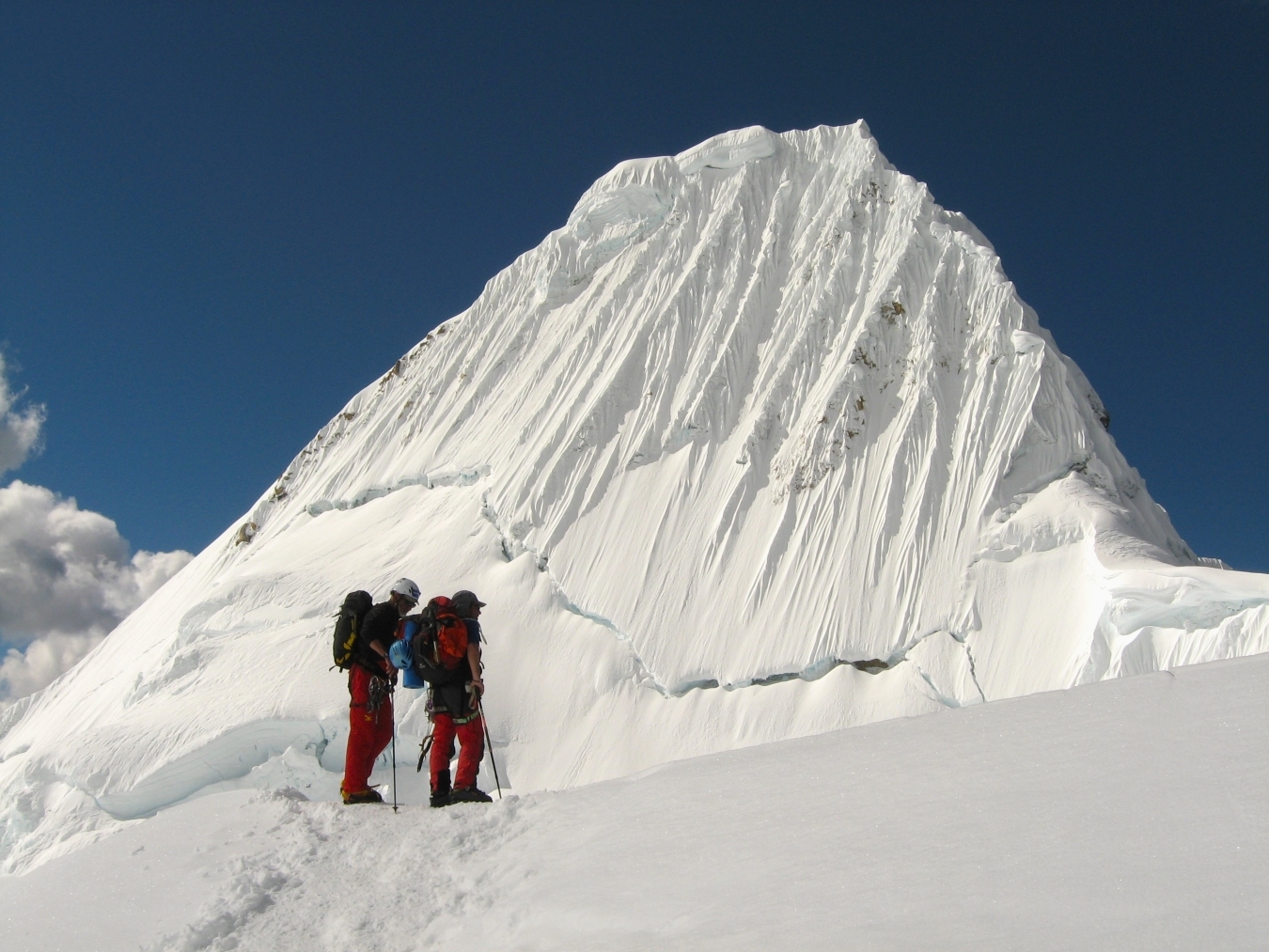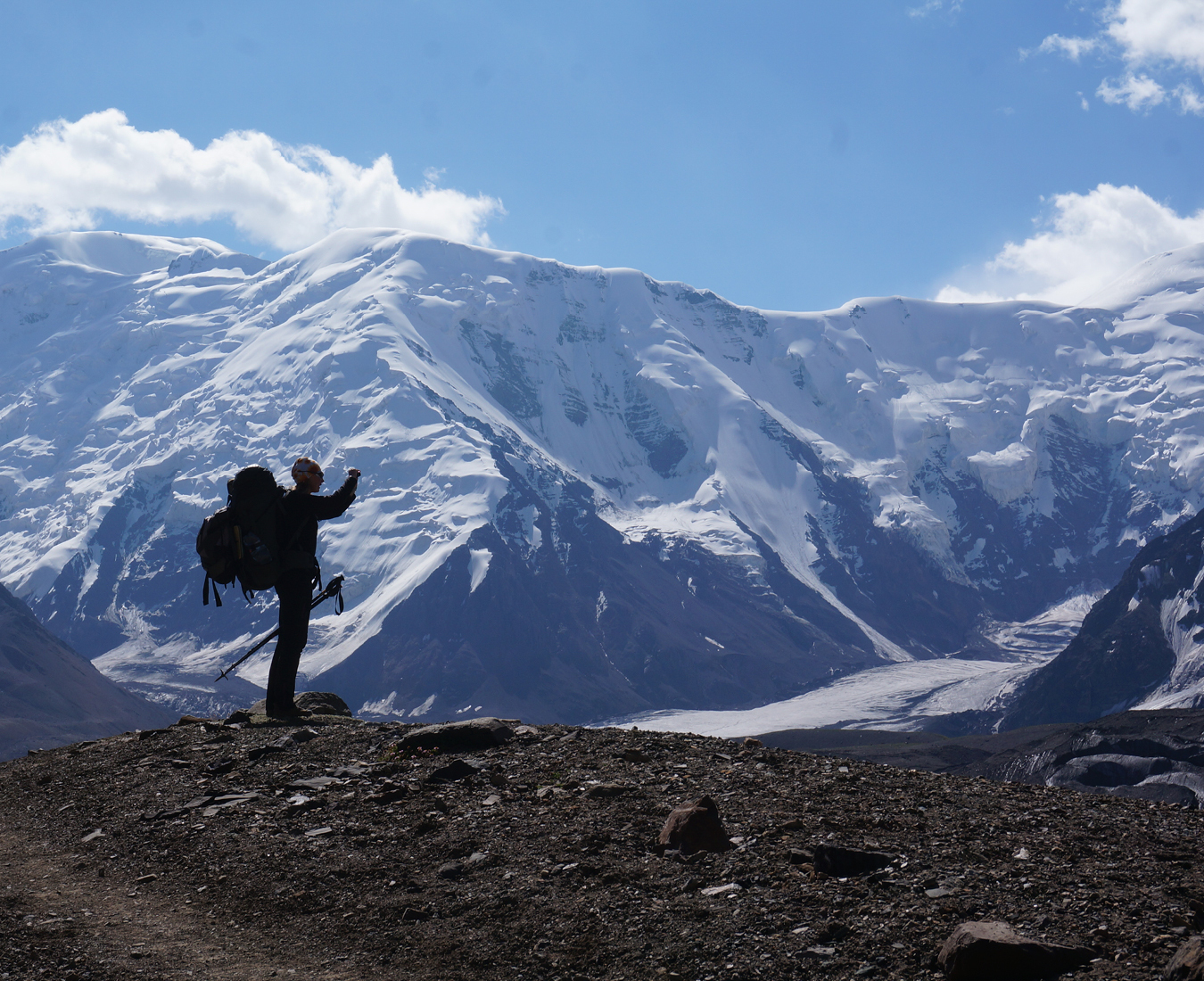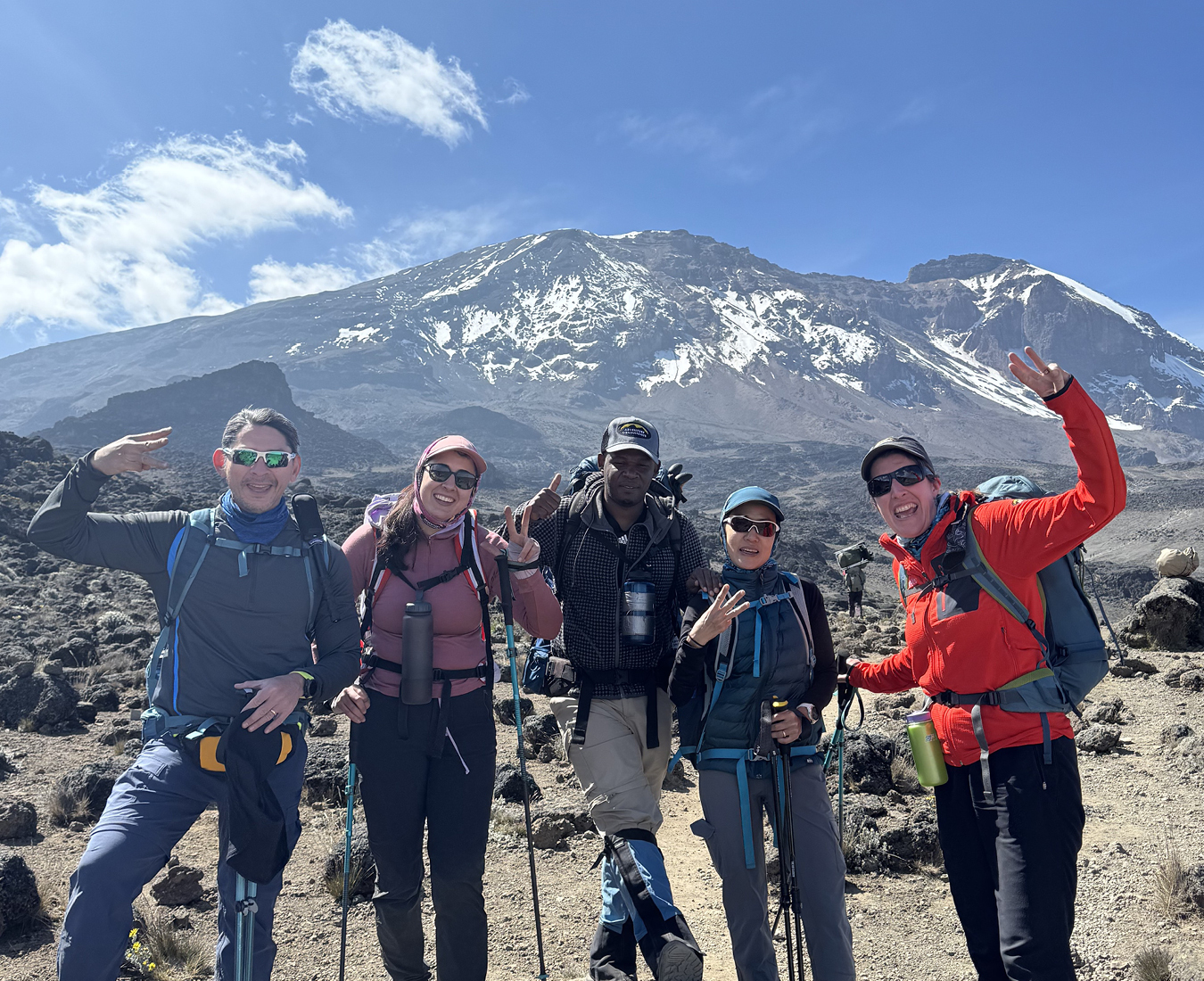The need for excellent physical fitness cannot be over-emphasised. A regular, strenuous programme must be followed for many months to achieve the level of fitness required. We suggest a programme tailored to mountaineering such as those from the Uphill Athlete.
Cayambe 5,790m/18,996ft
Cotopaxi 5,897m/19,347ft
Chimborazo 6,310m/20,702ft
Ecuador is a country of exquisite scenery, friendly people and outstanding mountains. Those of you who are relatively new to mountaineering or experiencing altitude for the first time will thoroughly enjoy this program.
Our qualified guides introduce you to international-standard climbing techniques through our glacier school, and you climb three splendid volcanic peaks including Ecuador’s highest, Mount Chimborazo. We begin by climbing the trekking peaks Ilaló, Pasochoa and Ruca Pichincha near Quito. These completed, we ascend Cayambe where we practice our climbing skills before moving onto Cotopaxi.
Chimborazo is the third summit that we climb on both névé and hard glacial ice. When travelling between our mountain destinations we stay in restored haciendas, some dating back to the early 1800s, which are now world-class resort hotels. On rest days we visit the majestic and wild ecological zone of the ‘cloud forest’ and revel in the region’s amazing biological diversity.
- Climb three mountains, including Ecuador’s highest peak
- A cultural and ecological discovery
- Experience high-altitude mountaineering on non-technical routes
Expedition Level
Expedition Level
Beginner
Elevation
Elevation
6,310m/20,702ft
Duration
Duration
15 days
Location
Location
Ecuador
Arrive in Quito, hotel night
Gear check and acclimatisation hike of Ilaló, hotel night
Acclimatisation hike Cerro Pasochoa, hotel night
Acclimatisation hike Rucu Pichincha, hacienda night |
Travel to Cayambe, hut night
Skills practice Cayambe / Hermoso Glacier, hut night
Summit Cayambe, hacienda night
Travel to Cotopaxi region, hacienda or lodge night
Travel to Cotopaxi National Park and hike to José Ribas Hut, hut night
Summit Cotopaxi, lodge night
Travel to Chimborazo, lodge night |
Hike to Stübel Camp, camping night
Chimborazo Summit, hotel night
Contingency Day. Return to Quito, hotel night
Depart from Quito

Departures and Pricing
| Start/End | Departing from | Quantity | Pricing | Notes | Book |
|---|---|---|---|---|---|
| 5 Jul - 19 Jul 2025 | Quito, Ecuador | Available | $5,040 USD $ | ||
| Book Now | |||||
| 1 Nov - 15 Nov 2025 | Quito, Ecuador | Available | $5,040 USD $ | ||
| Book Now | |||||
| 15 Nov - 29 Nov 2025 | Quito, Ecuador | Available | $5,040 USD $ | ||
| Book Now | |||||
| 6 Dec - 20 Dec 2025 | Quito, Ecuador | Available | $5,040 USD $ | ||
| Book Now | |||||
| 20 Dec - 3 Jan 2026 | Quito, Ecuador | Available | $5,040 USD $ | ||
| Book Now | |||||
| 10 Jan - 24 Jan 2026 | Quito, Ecuador | Available | $5,040 USD $ | ||
| Book Now | |||||
| 31 Jan - 14 Feb 2026 | Quito, Ecuador | Available | $5,040 USD $ | ||
| Book Now | |||||
| 14 Feb - 28 Feb 2026 | Quito, Ecuador | Available | $5,040 USD $ | ||
| Book Now | |||||
| 16 May - 30 May 2026 | Quito, Ecuador | Available | $5,040 USD $ | ||
| Book Now | |||||
| 6 Jun - 20 Jun 2026 | Quito, Ecuador | Available | $5,040 USD $ | ||
| Book Now | |||||
| 4 Jul - 18 Jul 2026 | Quito, Ecuador | Available | $5,040 USD $ | ||
| Book Now | |||||
Looking for a specific date? Book a private expedition
PREPARE
No technical climbing experience required, although team members should have previous backpacking or trekking experience.
No prior altitude experience required.

Adventure Consultants is renowned for the quality of its service and strategy applied to high altitude expedition climbing. Our reputation is attributed to meticulous planning and experienced logistics coordination. We have a philosophy of investing in every expedition to offer our climbers the best possible chance of success.
We employ strong and specialized Expedition leaders and support staff, who are some of the most pre-eminent in the industry. We pride ourselves on operating with small teams, the best back-up and support available. This includes nutritious and ample quantities of food, comfortable base camp facilities, reliable communications systems and the necessary medical back up.
Our Ecuador High Altitude Expeditions are a joint Adventure Consultants/American Alpine Institute trip. We use AAI’s experienced and motivated staff for these trips, offering you the best possible price and high quality expedition.
Many of our expedition members come to us because they have seen us in action on a previous trip and decide to opt for our level of service and proven experience. Others return because they know we do our very best to make expeditions safe and successful.
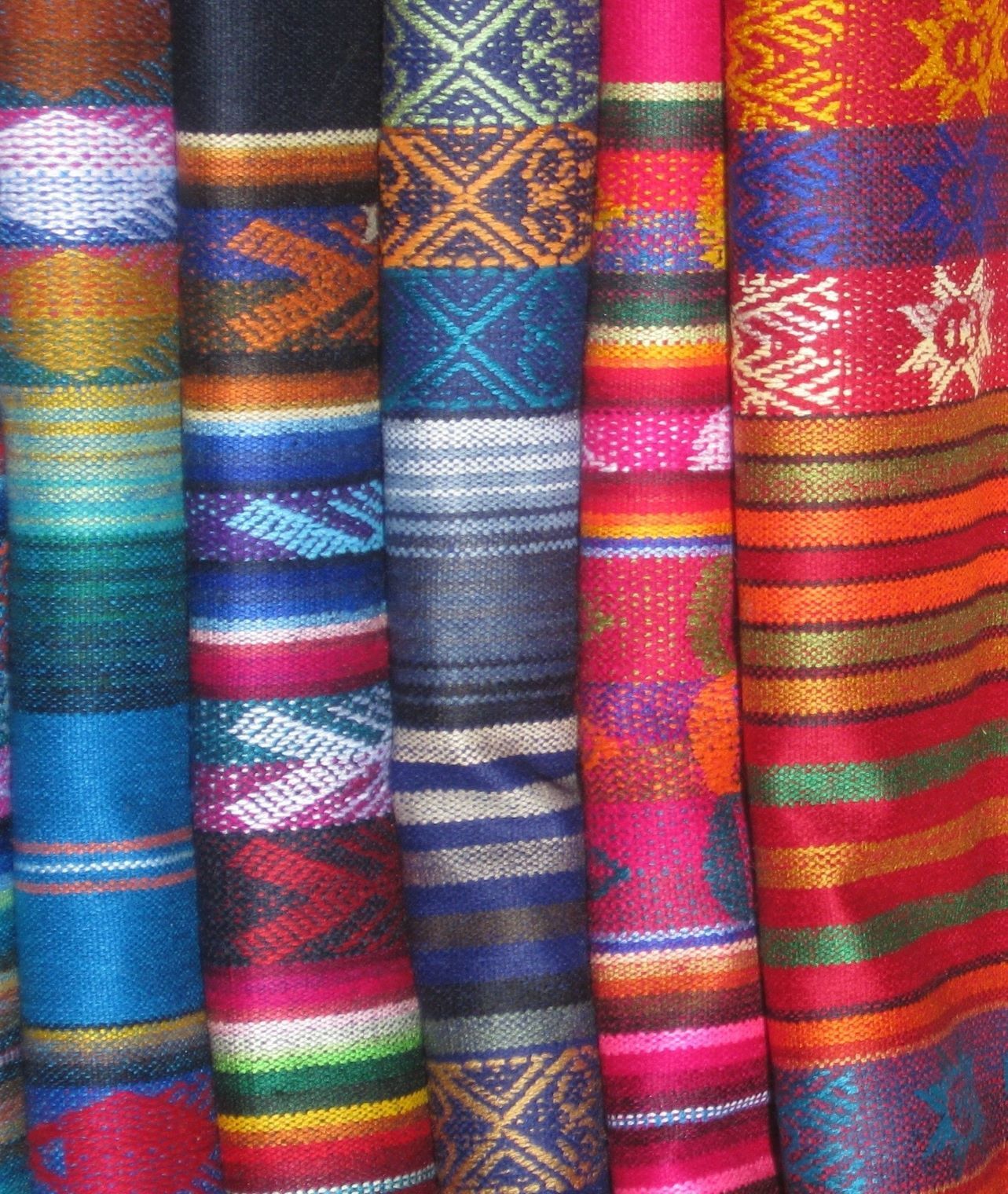
The price of your trip includes the following:
- Qualified and experienced mountain guides
- All expedition organisational requirements
- Land transport within Ecuador
- Lodging in hotels, haciendas, huts and tents on a shared basis during the expedition
- All trek and mountain food ex Quito, excluding lunches and dinners in hotels, haciendas and lodges
- Group equipment: ropes, tents, stoves etc. and all supplies necessary to make a safe and strong bid for the summit(s)
- Porters on Chimborazo for carrying group equipment
- Climbing permits
- National Park fees and admission to museums.
